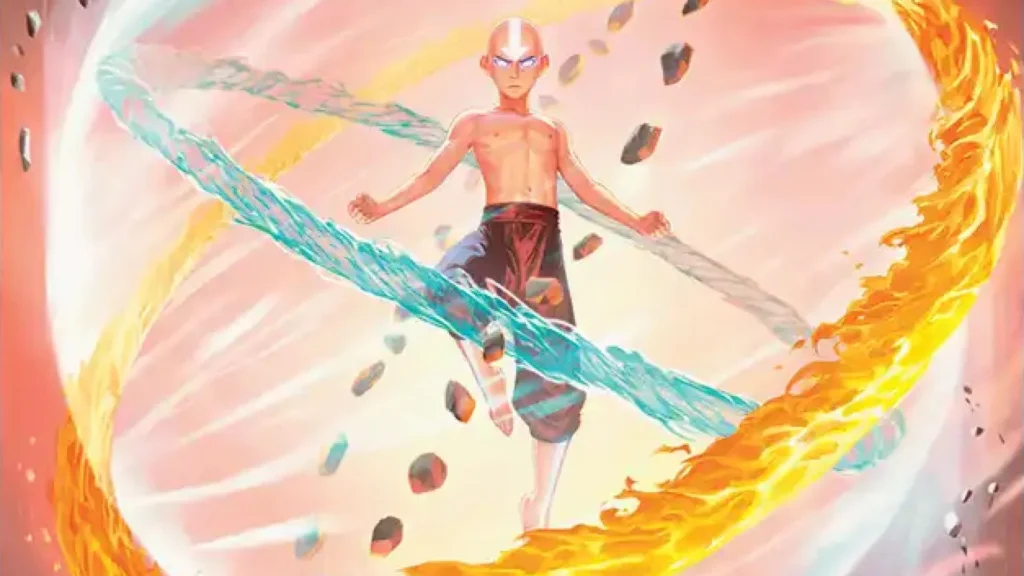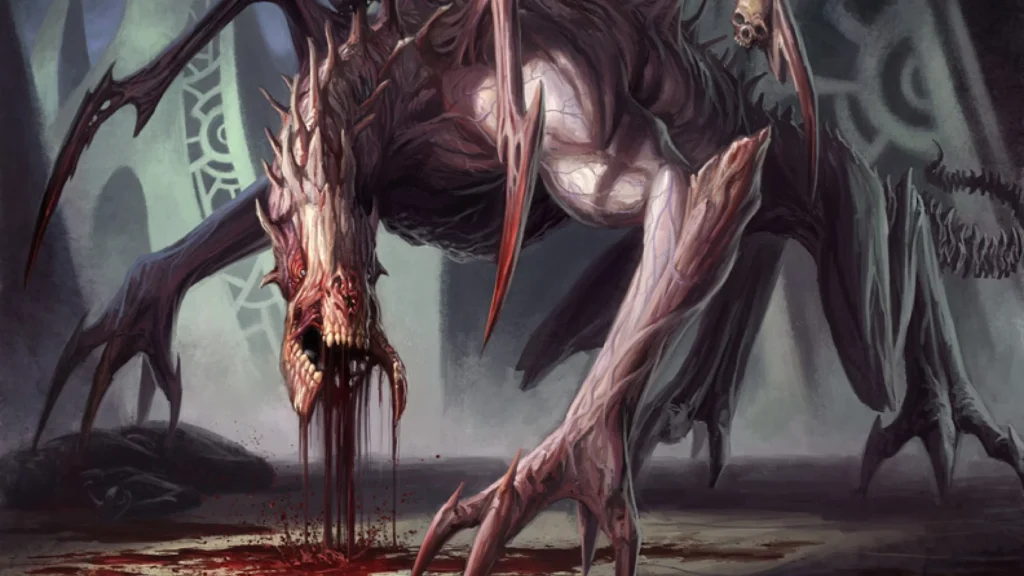For years, parasitic mechanics have been a divisive element of MTG design. These are mechanics which really only interact within themselves, typically constrained to just one set or block. The issues they cause, primarily from a deckbuilding standpoint, are well-known at this point, by both the community and Wizards. Despite this, based on a new post from MTG Head Designer Mark Rosewater, we may actually be seeing an increase in parasitic mechanics soon. The implications of this shift in approach are significant, for Magic players of all stripes.
An Increase In Parasitic Mechanics For MTG?

This revelation came via a Blogatog post earlier today. Hazelenses broached the topic of Avatar Aang/Aang, Master of Elements, a new card with a deeply parasitic design. Since it requires the use of four different, Avatar-specific mechanics to transform, it may actually be the clearest example of the issue to date. Responding to Hazelenses’s question, Mark Rosewater offered the following:
“R&D has been a bit more accepting of parasitic packages as of late (aka a bunch of cards that can be played together in a deck).”
Mark Rosewater, via Blogatog
It’s extremely surprising to see such a shift in philosophy take place. In the past, Rosewater has talked about cards being cut from sets due to being too parasitic. He’s also discussed the issues that including more than a small number of such cards in a set can have. One would expect Wizards to try and cut down on parasitic mechanics for these reasons. It turns out, however, that things may be heading in the opposite direction.
Before you panic, it is worth noting that this post, like much of Rosewater’s Blogatog output, is very vague. It doesn’t promise a specific amount of parasitic MTG mechanics, or even a general percentage increase. It does indicate that Wizards is getting more comfortable with the idea, however, which means more parasitic mechanics are definitely likely going forward.
Cause For Concern

This is a worrying statement for a number of reasons. Parasitic MTG mechanics are troublesome in a range of different ways, so seeing an increase in their use is far from ideal.
For starters, parasitic mechanics make deckbuilding much more linear. Since they only really function alongside other cards that share the same mechanic, your pool of options is greatly reduced. This can make it difficult for the mechanic to see play in a 60-card constructed format, but it’s even worse in Commander, where you can’t run four copies of your key synergy cards.
Because of this, parasitic mechanics are very all-or-nothing in terms of competitive success. Since they’re so self-contained, if a new parasitic mechanic doesn’t break out in its debut set or block, it’s unlikely it ever will, since new support is so rare. The Outlaw mechanic from Thunder Junction is a great example of this. A viable Outlaw deck never emerged with that set, and we’re unlikely to ever get more help for it later. This was a mechanic that specifically dodged some of the issues with parasitic design, too.
The above issue is magnified heavily by the increased presence of Universes Beyond in Magic, too. It’s hard for Wizards to find reprint windows for parasitic mechanics at the best of times. When they’re tied to licensed properties, things get even harder. Even if Wizards can reprint some of them under new names, as it has discussed previously, the new versions likely won’t work with the originals. An in-universe bending mechanic may not trigger Avatar Aang, for example.
Silver Linings

Of course, there are two sides to every coin. While the above issues are definitely noteworthy, parasitic mechanics also have some upsides, making them a viable tool in Wizards’ belt.
One of the best things about parasitic mechanics is the way in which they serve as easy on-ramps for new players. I bemoaned the linearity of these mechanics above, but for a new player, this is exactly what they need. A solid package of cards with easy synergies is a great way to get someone thinking about how to put a deck together, before they graduate to more complex builds later. It’s easy to overlook the new player experience as an enfranchised veteran, but this is a major upside for the former.
Even for more experienced players, when the mechanic is good enough to see play, parasitic mechanics can have a positive impact on competitive variety. In many MTG formats, the metagame devolves into a series of “good stuff” piles, where players simply run best-in-slot options in their colors. Mechanics with a lot of internal synergy push against this idea. They encourage the use of cards that aren’t the most powerful overall, but gain a lot of stock when combined with their intended peers.
Whether you view an increase in parasitic MTG mechanics as a positive or negative, it’s probably best to prepare for such a scenario soon. Even without Rosewater’s statement today, the rise in Universes Beyond, with its IP-specific mechanical needs, mean it’s almost inevitable.
Stick with us here at mtgrocks.com: the best site for Magic: The Gathering coverage. Be sure to check out our deckbuilder for your next big brew!
